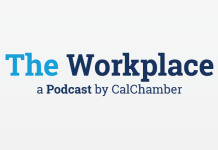The California Chamber of Commerce Board of Directors has taken the following positions on upcoming ballot measures:
SUPPORT: Reducing Crime and Keeping California Safe Act of 2018
Eligible for the November 2020 ballot, the Reducing Crime and Keeping California Safe Act rewrites two earlier criminal justice reform ballot measures (Proposition 47 and Proposition 57) to reduce the disincentive to commit property crimes and retail thefts, and reclassify certain violent crimes to remove special sentencing reductions.
Many cities around California have reported an increase in retail theft. For instance, Vacaville police records show the annual loss to retail theft has more than doubled since 2014. Organized retail theft, crimes with multiple suspects, were up 40% in 2019 as compared with 2014 in Vacaville. FBI crime data also shows retail theft is up statewide.
The Keep California Safe initiative discourages organized retail thefts by increasing penalties and saves retailers thousands of dollars in lost merchandise and loss prevention programs. The initiative:
- Includes a felony for “serial theft.” A person caught stealing merchandise valued at more than $250 three separate times would face felony charges.
- Expands the list of violent crimes for which early release isn’t an option.
- Requires Board of Parole Hearings to consider an inmate’s entire criminal history when deciding parole, not just his/her most recently committed offense.
OPPOSE: Rental Affordability Act
The Rental Affordability Act may appear on the November 2020 ballot. The ballot measure would replace the Costa-Hawkins Rental Housing Act, which was passed in 1995. Costa-Hawkins prohibits local governments from using rent control on (a) housing that was first occupied after February 1, 1995, and (b) housing units with distinct titles, such as condos, townhouses, and single-family homes.
This initiative would instead allow local governments to adopt rent control on any housing units, with exceptions for (a) housing that was first occupied within the last 15 years and (b) units owned by natural persons who own no more than two single-family dwellings.
The ballot measure is unnecessary in the wake of AB 1482, which was signed by Governor Gavin Newsom last October. To cap annual rent increases at 5% plus inflation for tenants. AB 1482 requires that a landlord have a just cause, as defined in the law, to evict tenants that had occupied the rental for at least one year. AB 1482 included exemptions for housing built in the past 15 years and some single-family homes and duplexes. The legislation was designed to sunset after 10 years.
The 2016 Legislative Analyst’s Office (LAO) report on California’s housing concluded that “[r]ent control will do nothing to increase our supply of affordable housing and, in fact, likely would discourage new construction.” LAO goes on to state, “attempt[s] to make housing more affordable without increasing the overall supply of housing . . . does very little to address the underlying cause of California’s high housing costs: a housing shortage.”
A substantial body of economic research analyzing the effects of rent control supports the LAO findings that rent control depresses new residential construction, decreases affordability of most units, encourages gentrification and creates spillover effects into surrounding neighborhoods.
Additionally, under Costa-Hawkins, landlords can increase rent prices to market rates when a tenant moves out (a policy known as vacancy decontrol). This ballot measure would eliminate vacancy decontrol and instead require local governments to only allow landlords to increase rental rates by no more than 15% during the first three years following a vacancy.
OPPOSE: The Fairness for Injured Patients Act
The Fairness for Injured Patients Act (FIPA) primarily seeks to increase and adjust the current noneconomic (general) damages cap under the Medical Injury Compensation Reform Act (MICRA) from $250,000 to reflect inflation since its adoption in 1975.
Additionally, FIPA seeks to revise MICRA to:
- Allow for noneconomic damages to exceed the proposed new cap in the event a patient’s injuries are catastrophic;
- Adjust the medical malpractice attorney’s fees prescribed in Business and Professions (B&P) Code section 6146 to reflect the increase in inflation since 1975;
- Abolish MICRA’s provision to allow for damages above $50,000 to be paid for by periodic payments;
- Extend the statute of limitations for a plaintiff to sue a health care provider from one year from date of discovery of harm to two years; and
- Extend statute of limitations for a minor to commence an action against a health care provider from three years from date of harm to four years.
Increasing the noneconomic damages cap under MICRA will increase health care costs for employers and employees, as health care providers will pass on the increased damage awards they suffer to patients and plan providers.
Moreover, increasing the noneconomic damages cap under MICRA could result in fewer medical providers in California. Despite proponents’ claiming otherwise, California has proof of the loss of health care providers in the state when there was no reasonable cap on noneconomic damages and medical malpractice litigation was threatening a significant increase in liability insurance.
The California Chamber of Commerce (CalChamber) is the largest broad-based business advocate to government in California. Membership represents one-quarter of the private sector jobs in California and includes firms of all sizes and companies from every industry within the state. Leveraging our front-line knowledge of laws and regulations, we provide products and services to help businesses comply with both federal and state law. CalChamber, a not-for-profit organization with roots dating to 1890, promotes international trade and investment in order to stimulate California’s economy and create jobs. Please visit our website at www.calchamber.com
#####


